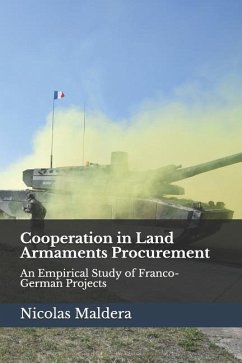The Franco-German case is a very interesting one when studying procurement cooperation. Despite radically different - if not opposed - historical experiences, both countries lie since decades at the heart of the Western security architecture. Repeatedly, for sound strategic, political, industrial or ideological reasons, France and Germany had a certain willingness to adopt common armaments and equipment for their respective national armies. Some successes are well known, like the Alphajet light aircraft or the Transall transport aircraft. Other attempts resulted in a mitigated outcome, like the Tiger combat helicopter. Others totally failed and never gave birth to common equipments. That is especially the case for main battle tanks and armored vehicles.Since the beginning of the Cold War and the revival of West-Germany in the 1950's, France and its nearest neighbor made several endeavours to develop and field common combat vehicles. Between the beginning of the 1950's and the end of the 1990's, there were indeed four successive projects: the AMX-50, the Standard Tank, the Tank 90 and the VBM / GTK armored wheeled vehicle. But interestingly, not a single one of these major land programs succeeded despite the apparent political will expressed by both partners. Systematically, such endeavours will give birth to distinct, uncommon military hardware.Therefore, we understand that there seems to exist a structural incapacity for France and Germany to reach a common outcome when cooperating for the procurement of major land weapon systems. Following this major and rather particular acknowledgment, I wanted to develop a multivariate analysis taking into account all types of obstacles encountered by France and Germany to field common armoured vehicles. When examining the military, political and industrial dimensions of these programs, it appears that difficulties were encountered everywhere.Every policy-maker in this field knows too well that the only real key factor of success of such large politico-industrial ventures is an alignment of political willingness, calendar perspectives, common operational need and mutually-beneficial industrial rationalization during the full program's length. This study shows that indeed no land program ever succeeded because no alignment was achieved on time. So if cooperation in this domain always failed in the past, why would this be different with on-going MGCS and CIFS projects in the future? What makes each time cooperation fail?Foreword by Marc Chassillan / Afterword by Fabrice Wolf








